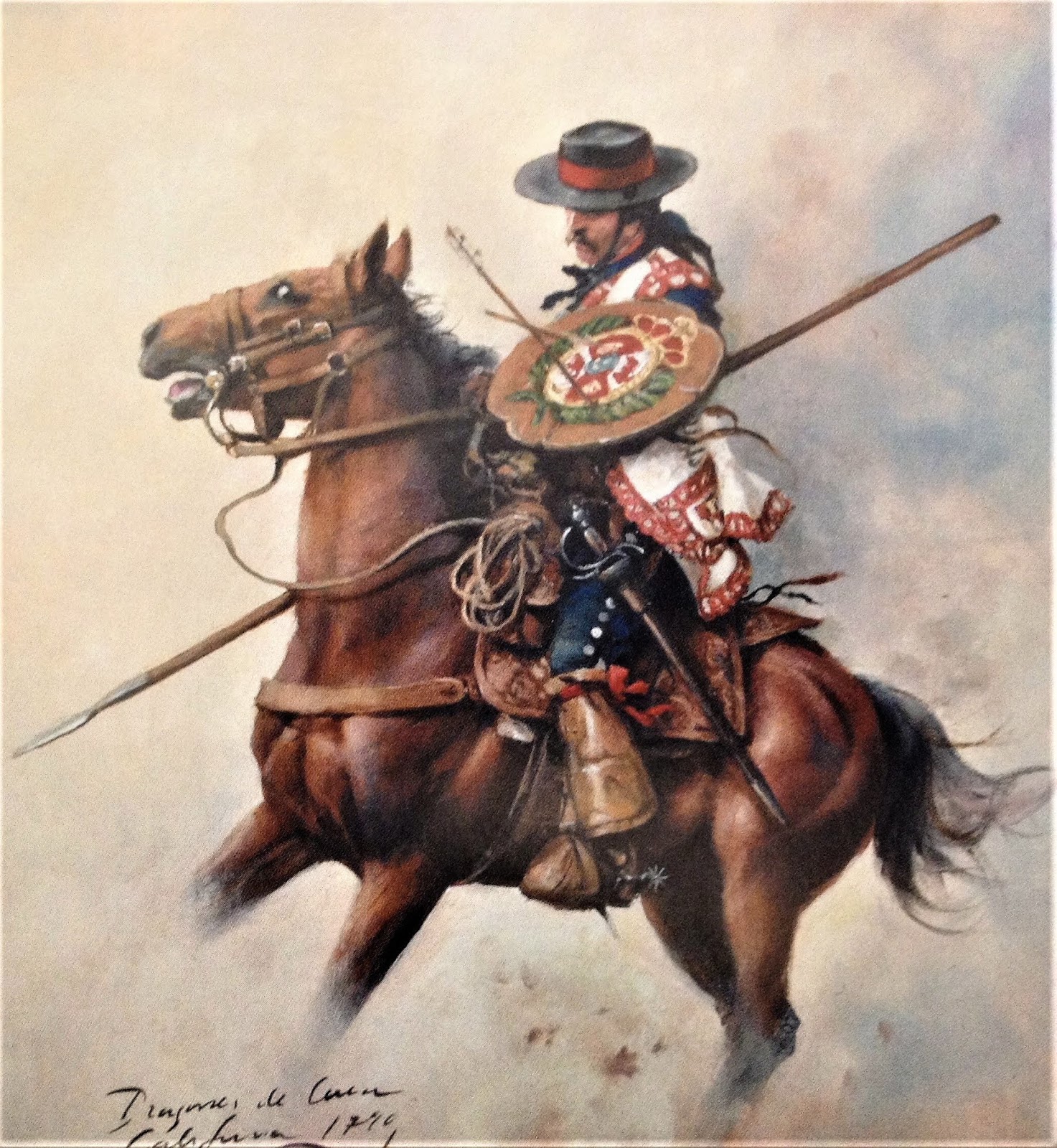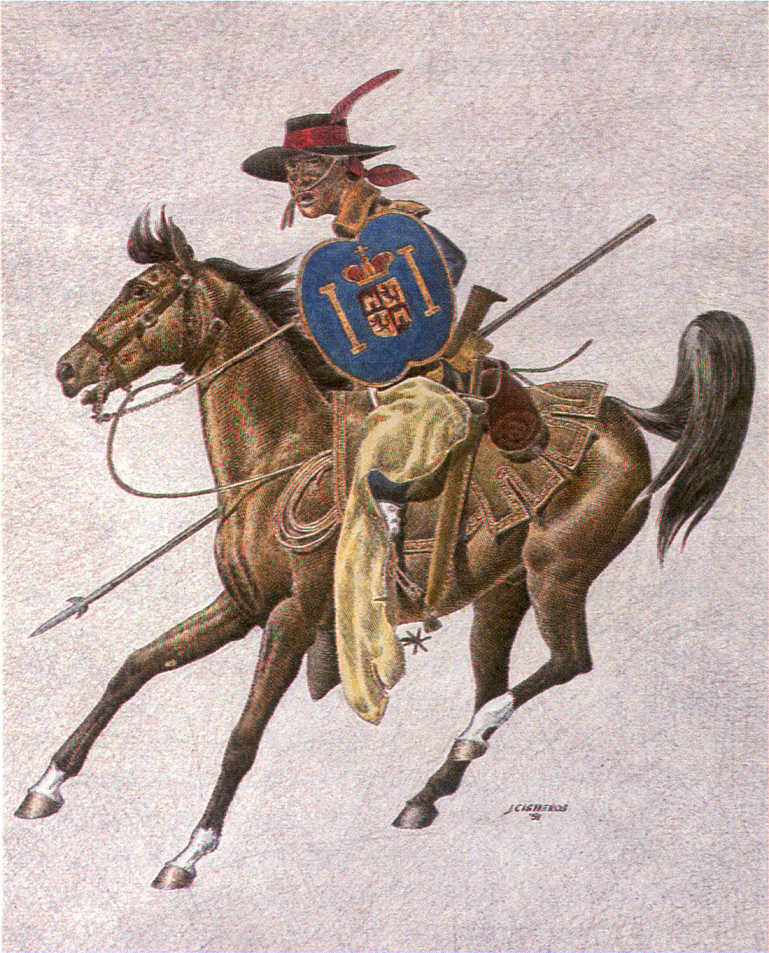
Hacienda Riquelme Blog Cuera Dragoons (LeatherJacket Soldiers)
Los dragones de cuera, soldados presidiales o soldados de cuera, eran tropas defensivas creadas por el Imperio español, para la defensa de la frontera de los Estados Unidos actuales, que ocuparon los presidios de la Nueva España.

MEXICO INFORMA ISLAM Cuando el far west era español
Spanish soldiers were called, Soldados de Cuera, (leather soldiers), because of their armor. The cuera was a heavy sleeveless coat made of several layers of leather. Padded with cotton or blanket fabric the armor was warm and cumbersome, weighing up to 20 pounds.

Dragones de Cuera 17901800 Dragones, Imagen de dragones, Guerreros
Josef de Zuniga: Comandante Of the Royal Presidio of San Diego, 1781-1792; The Founders of Santa Barbara: Who They Were and Whence They Came; Soldados de Cuera. Soldados de Cuera California Missions Studies Association; The Soldado de Cuera: Stalwart of the Spanish Borderland. The Families of the Presidio de San Diego

Pin en Soldados Edad Moderna
Interview with a Soldado de Cuera (Historical Spanish Frontier Soldier) reenactor at Mission Days at Mission San Antonio de Padua, California, an extended ex.

What was a "Soldado de cuera"? Soldado de cuera meaning "Leather Jacket soldier" were Spanish
Ramón de Murillo's sketch of the soldado de cuera . (Article written by Jonathan Woodward) During the eighteenth-century, Spain controlled most of the modern US Southwest, including Texas. To defend this region from both foreign encroachment and Indian attacks, the Spanish government established various fortresses or presidios along the frontier zones and garrisoned them with militia and.

Pin on Californio
The soldados de cuera (English, "leather-jacket soldier") served in the frontier garrisons of northern New Spain, the Presidios, from the late 16th to the early 19th century. They were mounted and were an exclusive corps in the Spanish Empire. They took their name from the multi-layered deer-skin cloak they wore as protection against Indian arrows.

Hacienda Riquelme Blog Cuera Dragoons (LeatherJacket Soldiers)
The soldados de cuera (English, "leather-jacket soldier") served in the frontier garrisons of northern New Spain, the Presidios, from the late 16th to the early 19th century.They were mounted and were an exclusive corps in the Spanish Empire.They took their name from the multi-layered deer-skin cloak they wore as protection against Indian arrows.

Soldado de Cuera (Leather Coated Soldier)
The soldados de cuera were regular soldiers of the Spanish army, but with a difference, they were mounted, and required to maintain six horses. They were supposed to be paid a regular salary, receive uniforms, arms and housing, and much of their food. In fact, in California, even before 1810, pay and uniforms seldom got this far, the soldiers.

Uniforms Spanish Period, Pre1800 Presidial
The Soldado de Cuera carried the arms and equipment specified in the Royal Regulations of 1772. For protection against arrows, he wore a leather jacket which was modelled after an Aztec ichcipilli — a quilted cotton sleeveless tunic made of seven or eight thicknesses of deer skin.

Nouvelle Espagne Soldados de Cuera Historia de mexico, Soldados, Uniforme ejercito español
Soldados de Cuera, leather-armored cavalrymen of late-eighteenth-century presidios in northern New Spain. The Regulation and Instruction for the Presidios of New Spain of 1772 established a fortified line of fifteen forts, approximately 100 miles apart, from the Gulf of California to the Gulf of Mexico.

"Por España y por el rey, Gálvez en America", oil on canvas by Augusto FerrerDalmau, 2015. It
El Presidio Real de Santa Bárbara, also known as the Royal Presidio of Santa Barbara, is a former military installation in Santa Barbara,. named for José María Cañedo, the Soldado de Cuera to whom it was deeded in lieu of back pay when the Presidio fell to inactivity, and the remnants of a two-room soldiers quarters,.

DRAGONES DE CUERA 5. Soldado cuera californiano; 6. Trompeta de las Compañía Cueras; 7. Oficial
Soldados de Cuera manning frontier presidios were a unique branch of the Spanish colonial armed forces, distinct from Spain's regular soldiers. They were distinguished from Spanish regulars not only in having been born and reared in the frontier provinces and thus adapted to harsh conditions but also in having their own regulations.

Dragon de cuera Conquistador, New Spain, Presidio, American Southwest, Samurai Gear, Soldier
Soldados de Cuera By Joseph Adamo [Originally appeared in the California Mission Studies Assn. Newsletter, August 1986.] The Spanish soldier and his family made up most of the population in Alta California in the early years of Spanish rule. Besides manning presidios, the SOLDADOS also guarded Mission establishments throughout Alta.

Spanish and Mexican California Soldados de Cuera
The leather jacket, or cuera, and the leather shield, or adarga, were used to protect the soldiers against Indian arrows. Traditionally, the Presidial soldiers were split into two categories: the traditional soldado de cuera and their mounted counterparts, the troopa ligera (lit." light troops").

Pin de Sean McCoy en Cuera Cavalry Historia antigua, America espanola, America del norte
The soldados de cuera (English, "leather-jacket soldier") [1] served in the frontier garrisons of northern New Spain, the Presidios, from the late 16th to the early 19th century. [2] They were mounted and were an exclusive corps in the Spanish Empire.

Dragones de Cuera 17901800 Tribal warrior, Historical warriors, Mexico history
The soldado de cuera, or leather-jacket, was a type of soldier who served in the frontier garrisons of northern New Spain. He took his name from the multi-layered deer-skin cloak he wore as protection against Indian arrows. He was armed with a short musket, bow and arrows, a short sword, a lance, and a bull-hide adarga.These frontier soldiers were recruited from among the mestizo population.